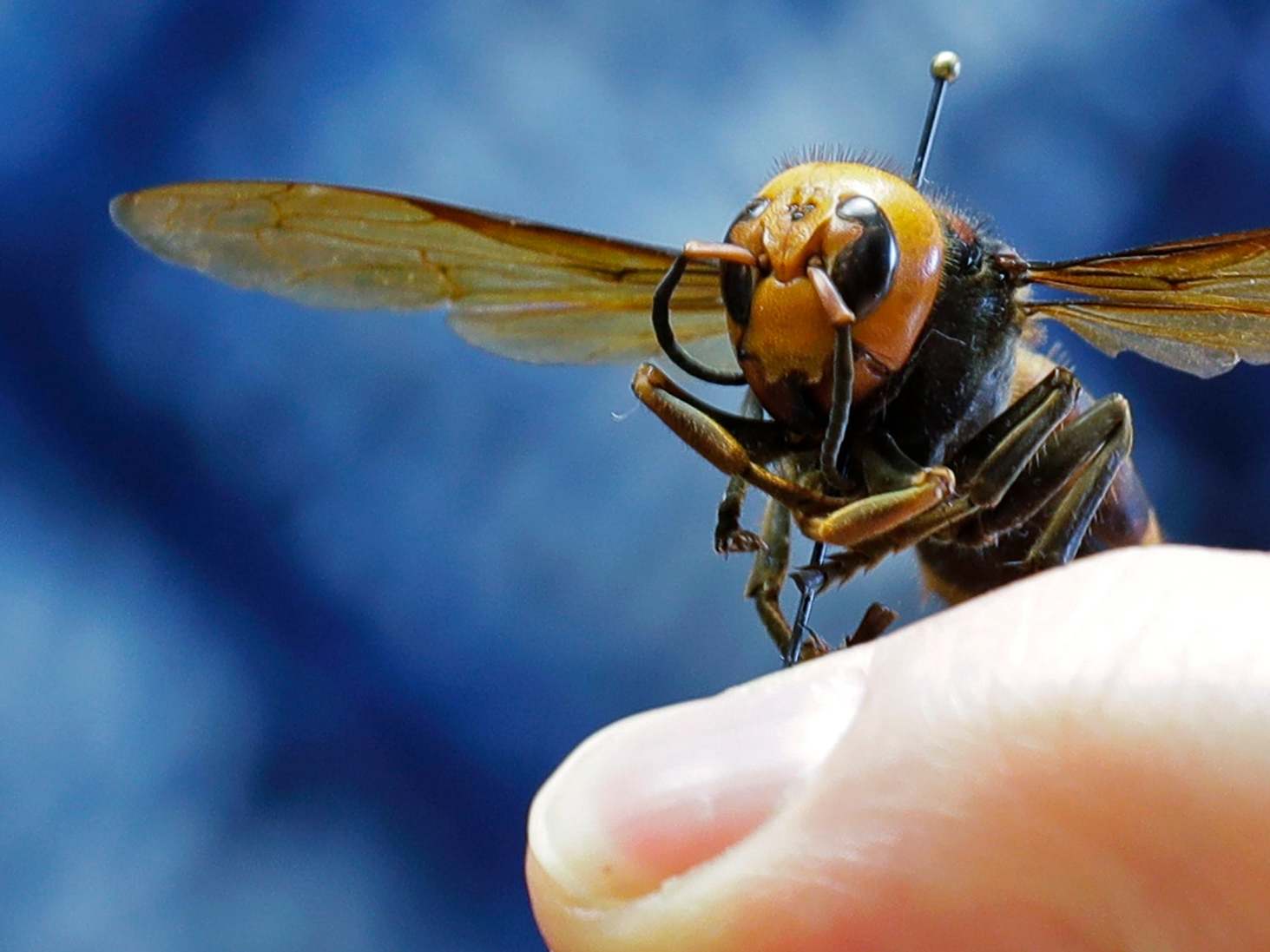What are ‘murder hornets’ and have they been found in the UK?

Your support helps us to tell the story
From reproductive rights to climate change to Big Tech, The Independent is on the ground when the story is developing. Whether it's investigating the financials of Elon Musk's pro-Trump PAC or producing our latest documentary, 'The A Word', which shines a light on the American women fighting for reproductive rights, we know how important it is to parse out the facts from the messaging.
At such a critical moment in US history, we need reporters on the ground. Your donation allows us to keep sending journalists to speak to both sides of the story.
The Independent is trusted by Americans across the entire political spectrum. And unlike many other quality news outlets, we choose not to lock Americans out of our reporting and analysis with paywalls. We believe quality journalism should be available to everyone, paid for by those who can afford it.
Your support makes all the difference.As if the world wasn’t bad enough at the moment, media reports in recent days have warned of giant “murder hornets” which can kill humans potentially invading the UK.
The insect, which is commonly known as the Asian giant hornet, is the world’s largest species of hornet, with a body length of about two inches, and is native to parts of Asia - although it can sometimes be found in other countries.
In April, officials in Washington state in the US asked members of the public to report any sightings of the hornet and warned the species could “decimate” US bee populations if it became established in the country.
However, some insect experts have said reports about the threat posed by the species have been sensationalised.
Doug Yanega, a senior scientist at the Entomology Research Museum at the University of California, told Business Insider this month that the insect did not pose an “existential threat” to mankind.
“Even if they do get established and build a foothold here [in the US], the scale of the threat is greatly overblown,” Mr Yanega said.
Here’s what you need to know about the Asian giant hornet...
Why are they called ‘murder hornets’?
Media outlets in Japan have referred to the insect as a “murder hornet” for years and the term gained wider recognition when it was picked up by a New York Times reporter in May this year.
The nickname was created in response to the hornet’s potentially fatal sting and its aggressive group attacks, particularly against bees.
Asian giant hornets have been found to destroy entire beehives in a matter of hours, decapitating the bees inside, in what is known as the insect's “slaughter phase”.
Can they kill humans?
Yes, but deaths are rare. The hornet’s venom can lead to anaphylactic shock or cardiac arrest and the species is responsible for an estimated 30 to 50 deaths per year in Japan, according to the United States Department of Agriculture.
However, it is unclear whether the Asian giant hornet is significantly deadlier than other wasps and hornets, and the insect is not typically aggressive towards humans – although it will attack people if threatened.
In 2013, people in China who had been stung more than 10 times were told to seek medical help.
The giant hornet is considered to be a much greater threat to the bee population than it is to humans.
Have Asian giant hornets been found in the UK?
Recent media reports have suggested that “murder hornets” have been found in the UK but this does not appear to be true.
The confusion seems to be in part due to the distinction between the Asian giant hornet and the smaller Asian hornet (also known as the yellow-legged hornet) - which is considered to be an invasive species to the UK.
A 2018 article on the Natural History Museum's website said Asian giant hornets had not yet reached Europe, but were sometimes confused with the yellow-legged hornet.
The smaller Asian hornet has been spotted on numerous occasions in the UK since 2016, with a recent reported sighting on 16 April in Guernsey this year.
The Department of Environment, Food & Rural Affairs (Defra) has confirmed a total of 17 sightings of the smaller hornet in England, with the most recent sighting recorded in Dorset in October 2019.
Defra has been contacted to confirm whether there has ever been a sighting of the Asian giant hornet in the UK.
What should I do if I see one?
The government does not have specific guidance for the Asian giant hornet but it does have advice for what to do if you see the smaller Asian hornet that is sometimes found in the UK.
If you think you have seen the insect, you should report this sighting using the “Asian Hornet Watch” app, which is available to download on iPhones or Android smartphones.
You will be asked to include information on the location and date of the sighting, as well as the number of Asian hornets you saw and, if possible, a photo to help identify the insect.
Members of the public are not advised to try to remove a nest themselves as this should be done by experts.
If the sighting is confirmed, officials from the National Bee Unit and the Animal and Plant Health Agency will work to locate and destroy any Asian hornet nests.
Defra has said a total of nine nests have been destroyed in England since 2016.
Join our commenting forum
Join thought-provoking conversations, follow other Independent readers and see their replies
Comments